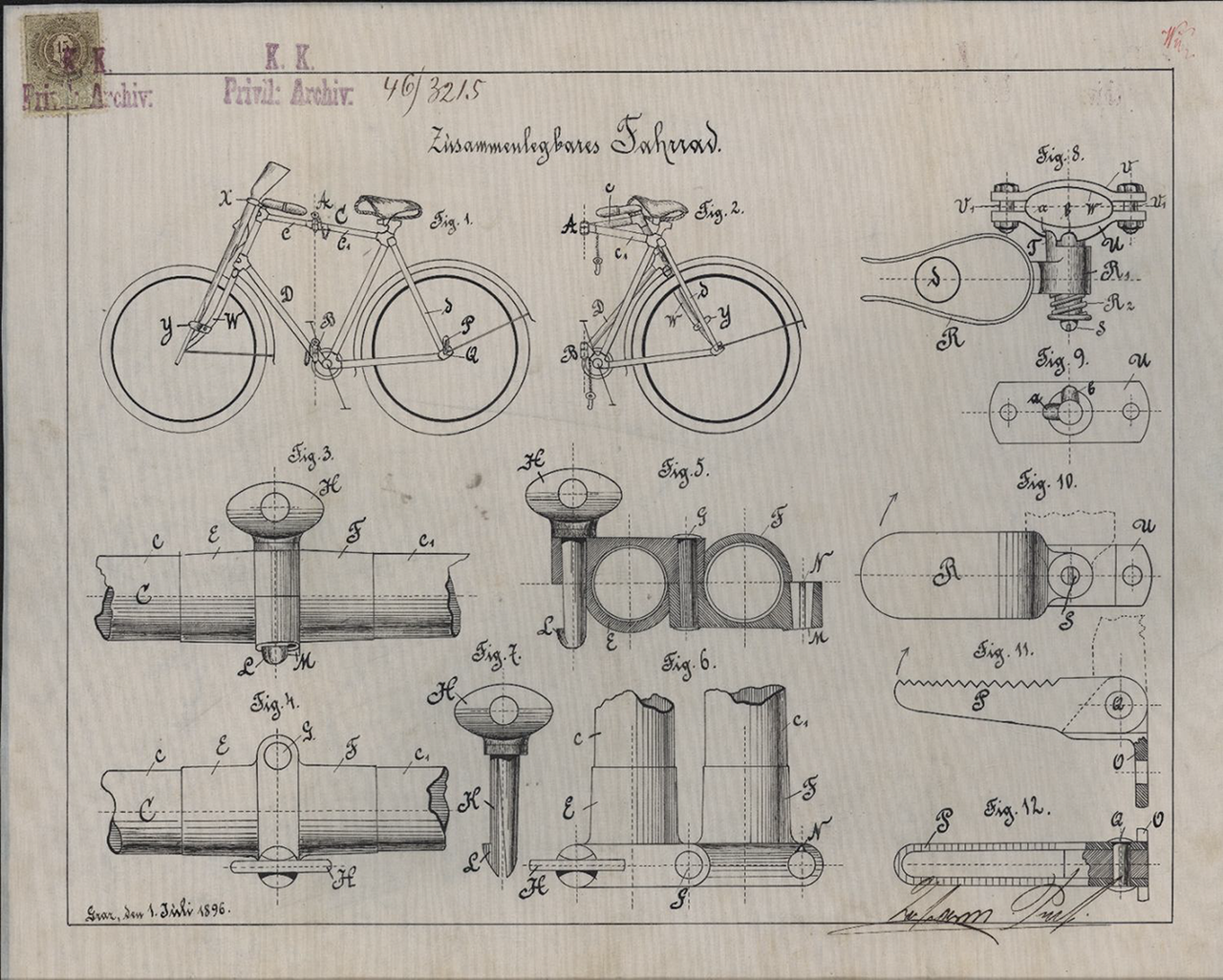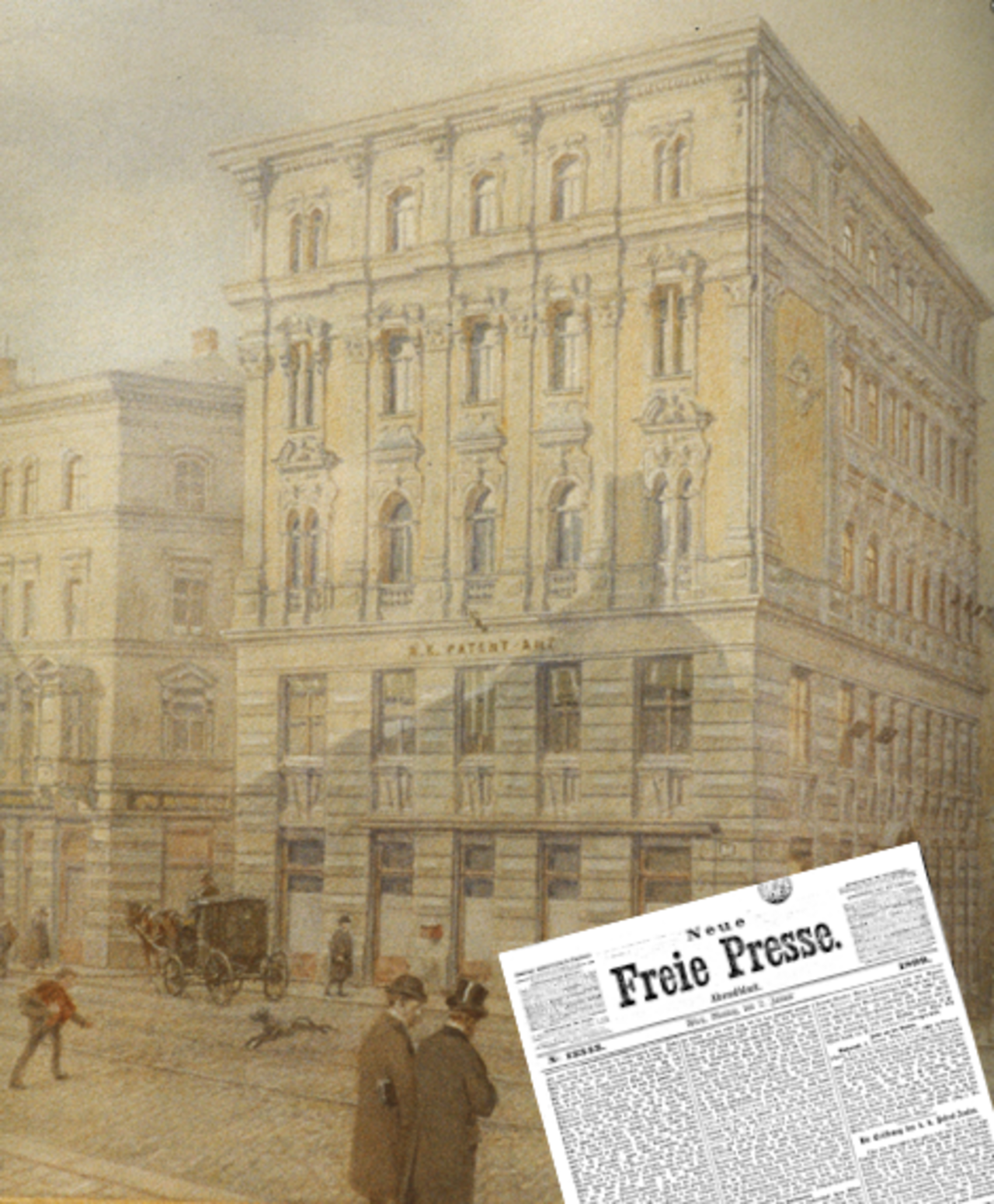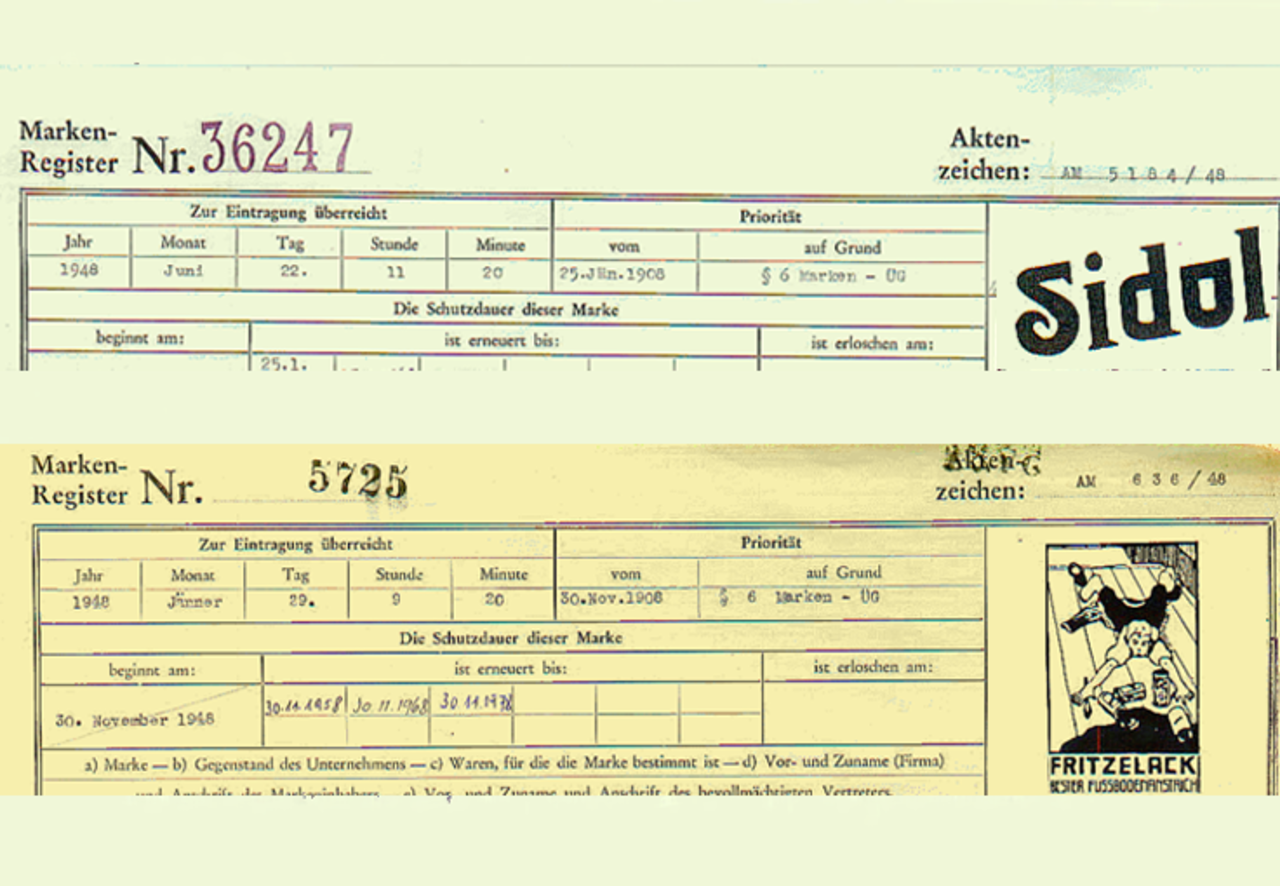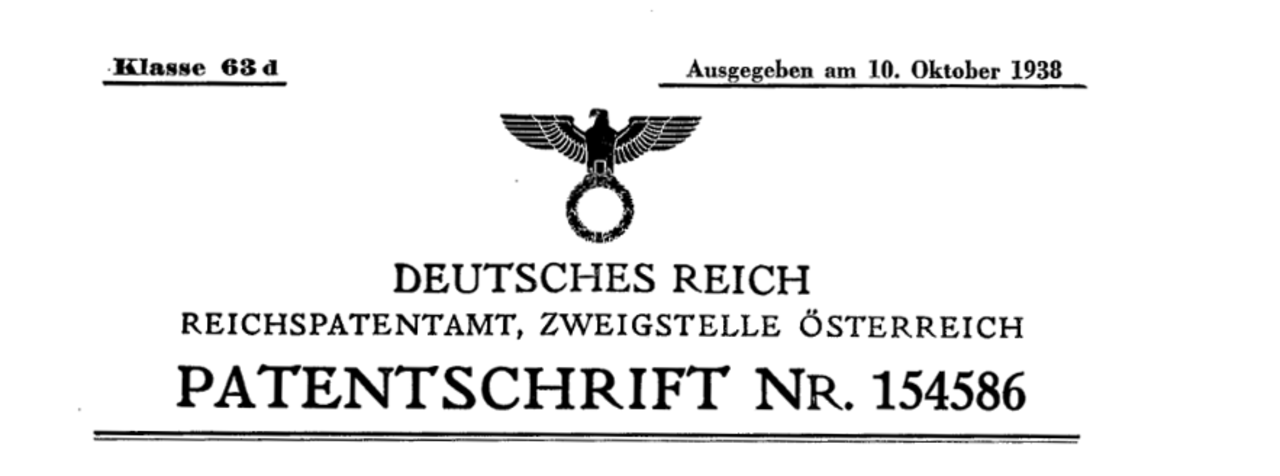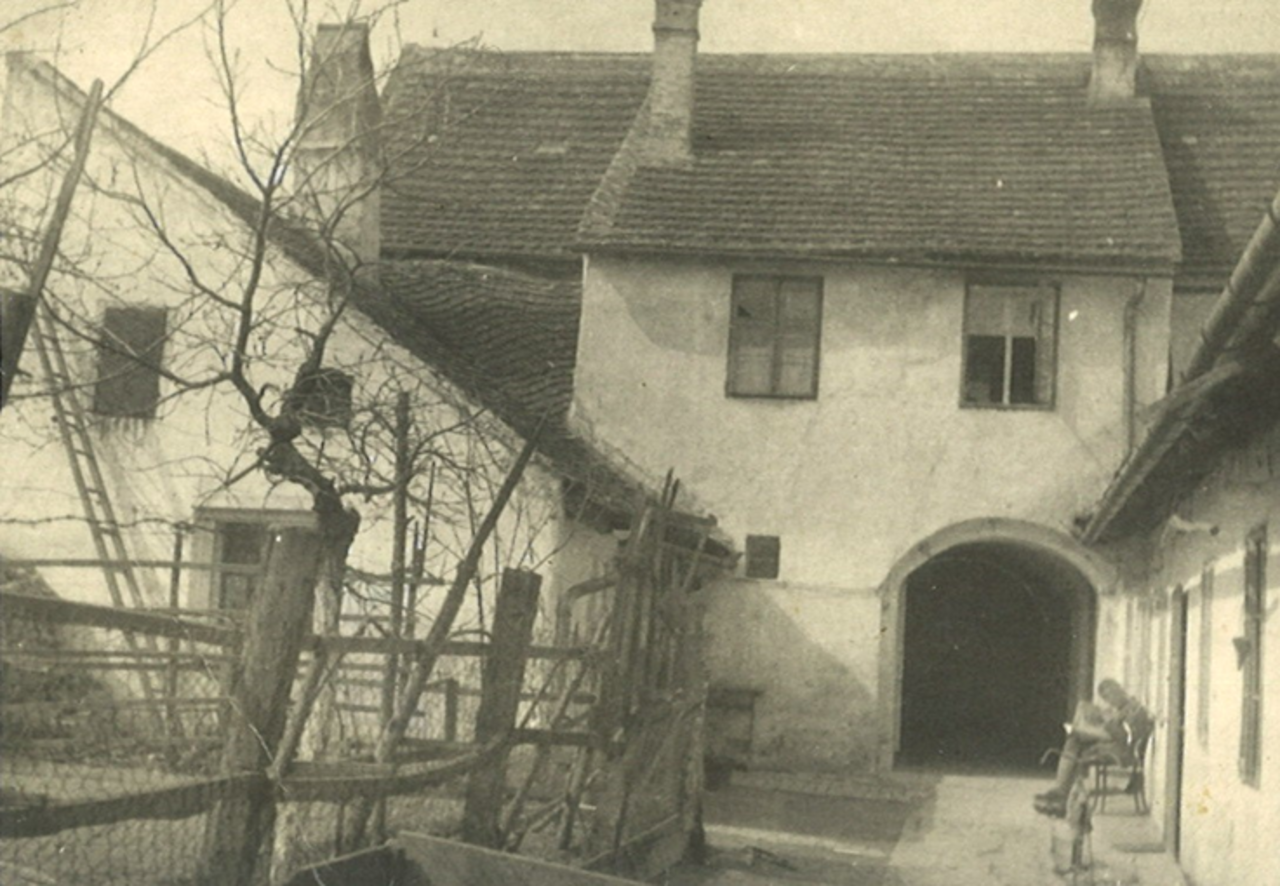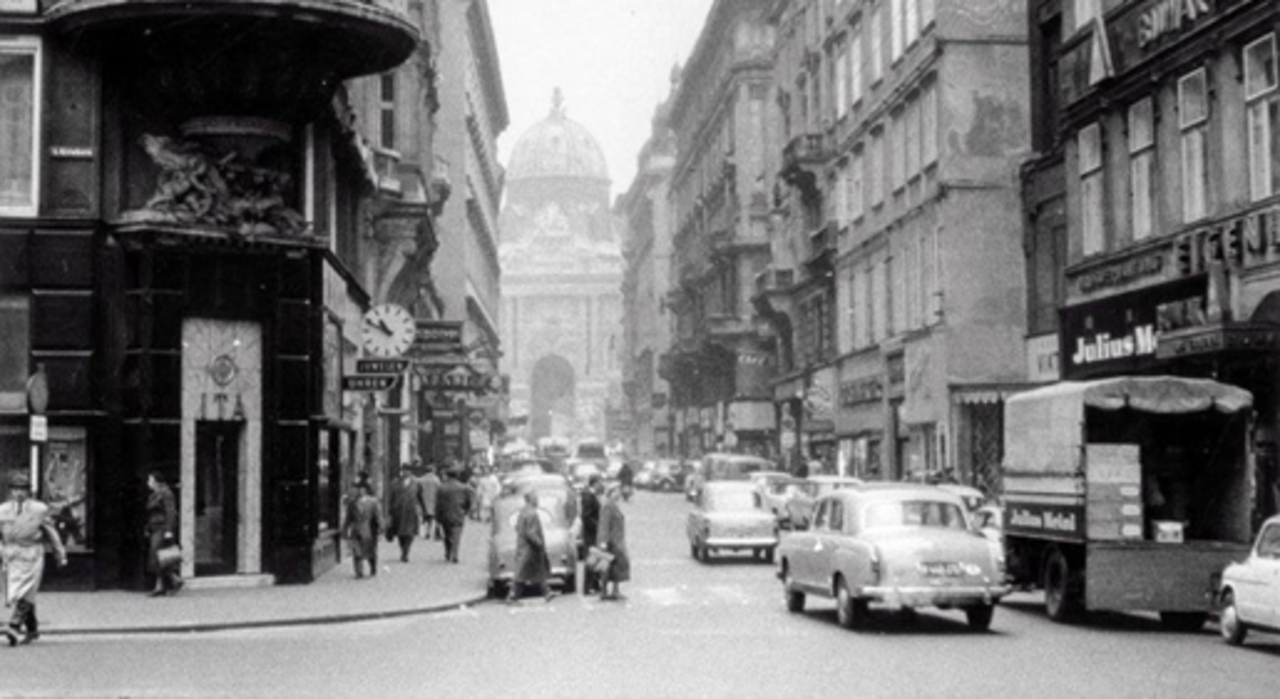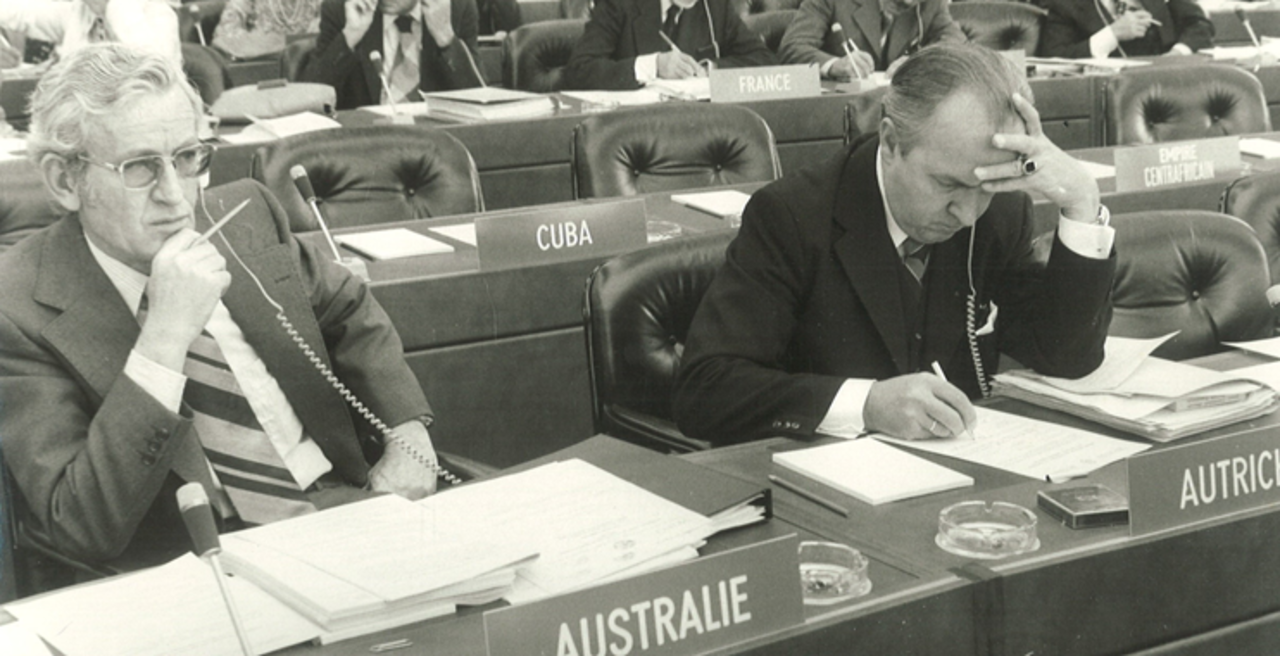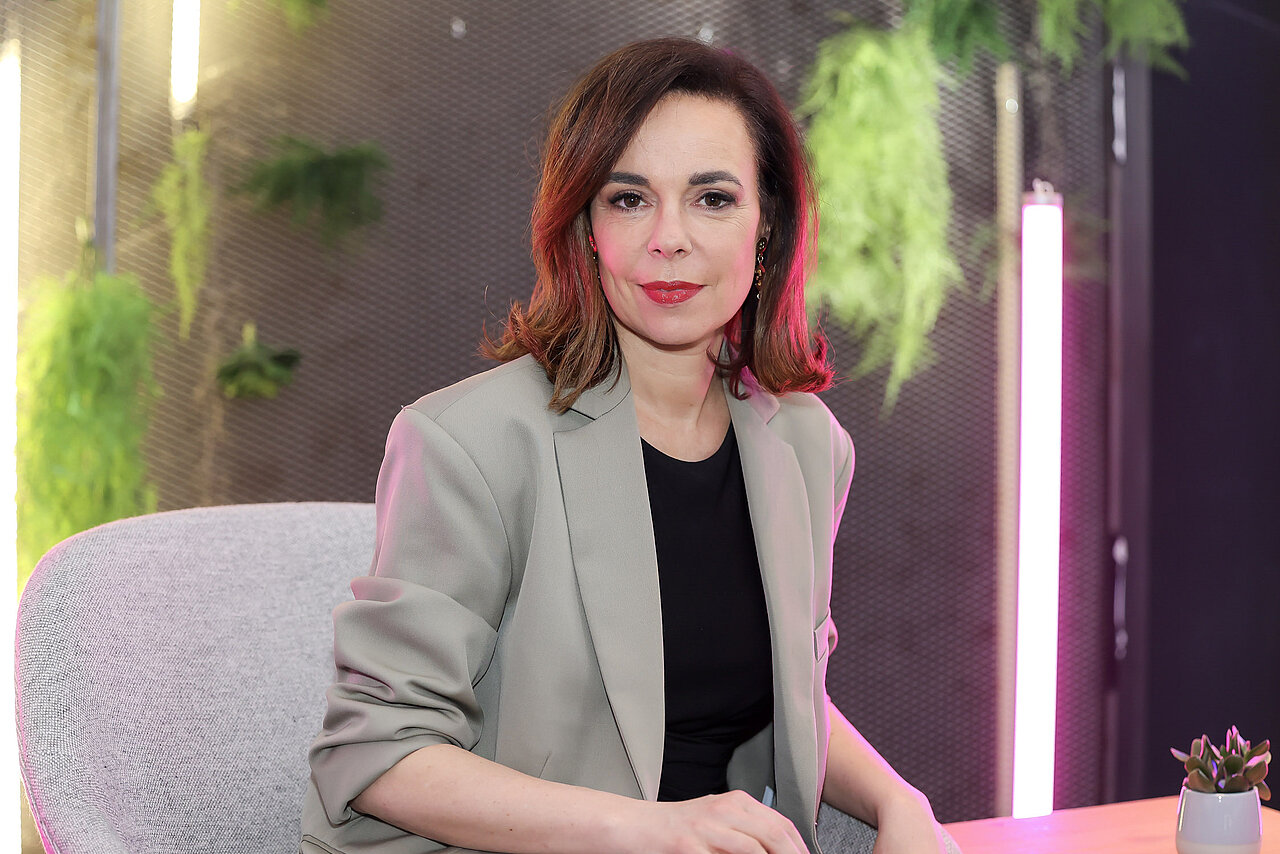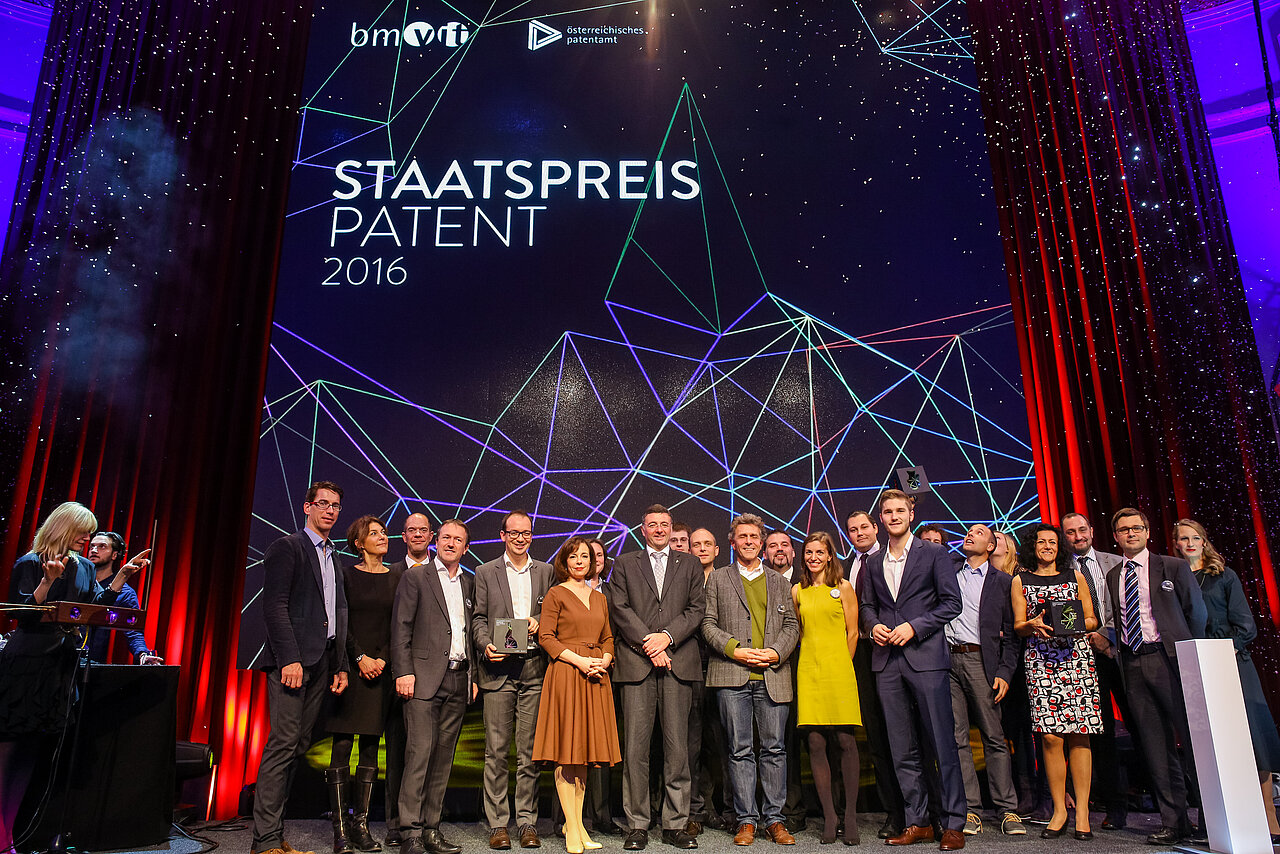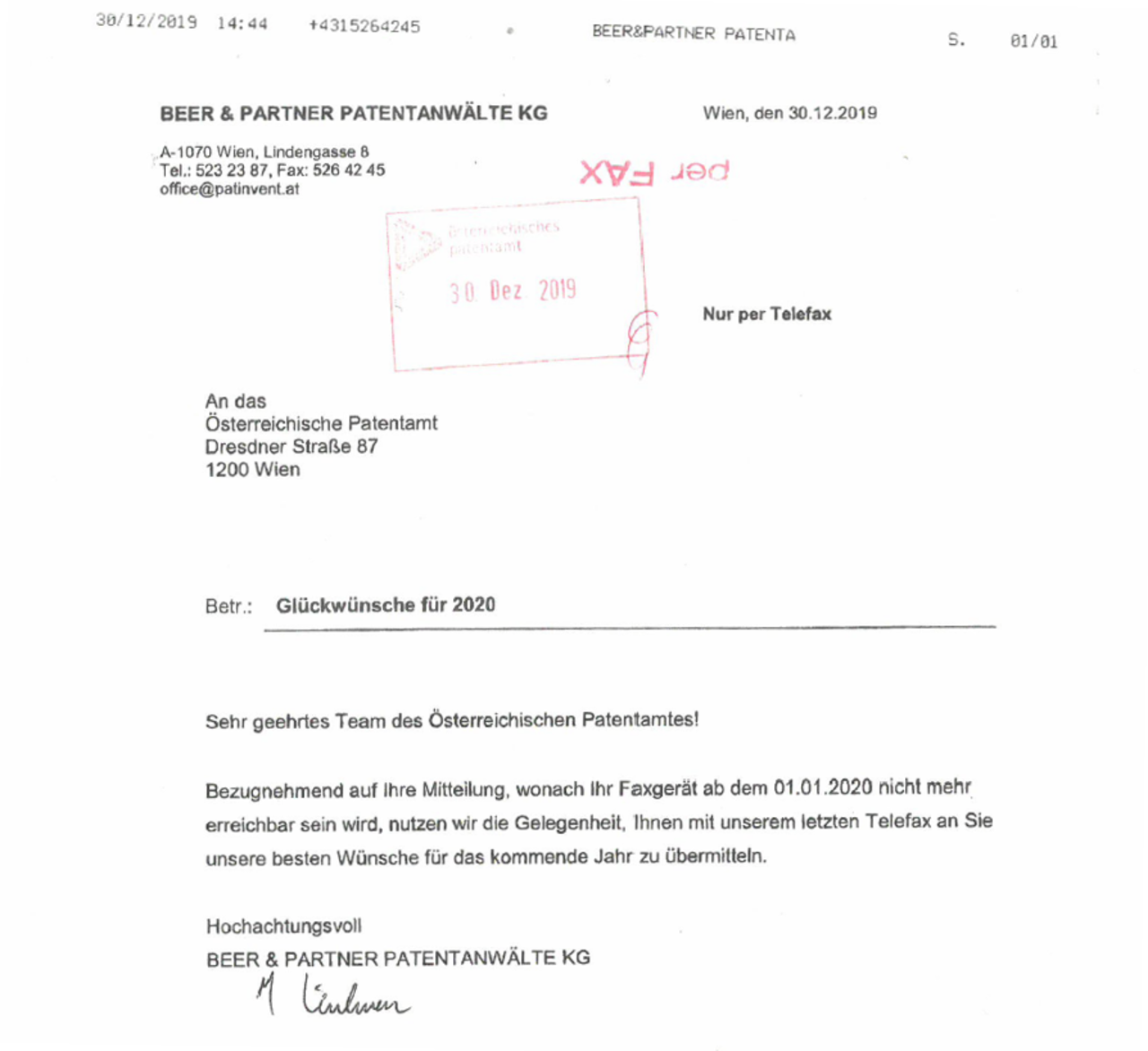Main content:
This was our anniversary year
2024 was a special year for us: we celebrated 125 years of the Patent Office. What was there to celebrate? 125 years of filing? 125 years of stamping? Yes, but actually much more than that. 125 years of being open to new ideas! That's how long the Austrian Patent Office has been a contact point for innovative and creative people. Be it patents, trademarks or designs - we support people in protecting their intellectual property from imitators. Specifically, we celebrate around 750,000 patents applied for and around 500,000 trademarks registered since 1899.
On November 28, 2024 numerous guests from Austria and abroad followed the invitation of the Austrian Patent Office to the conference ‘IP (Intellectual Property) for the Green and Digital Transition’ at the Wien Museum.
In his welcoming address, Patent Office President Stefan Harasek emphasised that the Patent Office not only wanted to look back at its 125th anniversary, but also to look ahead: "What does it need to meet current and future challenges?"
During the keynote speeches and lively discussions, the participants agreed that IP will make a significant contribution to the success of the green and digital transformation.
The most important international organizations in the field of intellectual property were represented by their heads: Daren Tang, Director General of the World Intellectual Property Organisation (WIPO), António Campinos, President of the European Patent Office (EPO) and João Negrão, Executive Director of the European Union Intellectual Property Office (EUIPO) were there.
Henriette Spyra, Head of the section 'Innovation and Technology' at the Austrian Ministry for Climate Protection, and Raphaela Tiefenbacher, Head of Strategy at the Austrian Patent Office, discussed how Austrian innovation policy is shaping the transition.
Kamil Kiljański, Deputy Director for Intellectual Property, Directorate General Internal Market, gave an insight into the importance of Intellectual Property in the European Commission's mandate, which is only a few days old.
Victoria Berger, founder of and-less GmbH and Lukas Renz, founder of HydroSolid GmbH, both pioneers of the transformation, discussed with Eva-Kathrin Ehmoser from the University of Natural Resources and Applied Life Sciences and Karin Hofmann, Patent and Licensing Manager at the Vienna University of Technology. They talked about the successes and obstacles of their exemplary green tech companies and illustrated their arguments with best practice examples.
Daren Tang, Director General of the World Intellectual Property Organization (WIPO):
“For 125 years, the Austrian Patent Office has been a critical driver of innovation, both nationally and across Europe, nurturing ideas that have helped shape today's world. As we stand at the forefront of transformative changes, including the accelerating green and digital transitions, it is especially timely for the APO to unite the IP community in charting the path forward. I am honored to join this milestone occasion and to celebrate the deep bonds that connect WIPO and our friends in Austria.”
António Campinos, President of the European Patent Office (EPO):
“Let today’s celebration act as a reminder, not only of the history of the innovative spirit here in Austria, but also of the task that lies ahead. And our responsibility to continue breaking down barriers for inventors seeking to bring green technologies out of the lab and into the marketplace. Technologies that benefit society at large and will help secure a sustainable future.”
João Negrão, Executive Director of the European Intellectual Property Office (EUIPO):
„As we celebrate the 125th anniversary of the Austrian Patent Office, we recognise it as a model for IP offices worldwide. By evolving to meet user needs through the green and digital transitions, it sets a benchmark for fostering innovation and sustainable growth. Together, the EUIPO and APO will keep building an IP system that supports future-ready economies and drives progress across Europe .“
The conference was followed by a birthday party, at which Leonore Gewessler, Minister for Climate Protection and responsible for the Patent Office, expressed her gratitude for the trustful cooperation. When it comes to the innovative ideas we all need for a future worth living in, she is undisputed: "The Patent Office is a place where good ideas are in very good hands".
The book on the history of the Austrian Patent Office
Instead of publishing a commemorative publication, we have come up with a different approach to the eventful history of the Austrian Patent Office. Maria Wirth and Alexander Pinwinkler from the Association for the Scientific Reappraisal of Contemporary History at the Institute for Contemporary History at the University of Vienna investigated the history of the Austrian Patent Office from the imperial era to the present day and visited numerous contemporary witnesses. For the first time, the darkest epoch of the office is also dealt with in its entirety - National Socialism and its effects.
The book „Behörde. Wissensspeicher. Serviceeinrichtung. Das Österreichische Patentamt 1899-2024” has been published by StudienVerlag and is available in specialist shops (ISBN 978-3-7065-6423-6). It was financed by the Federal Ministry for Climate Protection, Environment, Energy, Mobility, Innovation and Technology, the Austrian Patent Office and the Vienna Science, Research and Technology Fund.
Before 1899: Privileges, the Forerunners of Patents
Our privilege archive contains amazing inventions from 1852-1899, such as a folding bike from 1896. Privileges were similar to today‘s patents: a type of monopoly on the use of inventions. The unique historical collection of our library comprises about 95,000 documents – some handwritten and with beautifully colored drawings. Have a look at privilegien.patentamt.at
How it all began
On January 2, 1899, the Austrian newspaper „Neue Freie Presse" reported on the founding of the Imperial and Royal (k.u.k) Patent Office at Siebensterngasse 14 in the 7th district of Vienna. The opening took place „without any ceremony” and the greeting of the officials by the responsible Minister of Commerce, Baron von Dipauli, had to be postponed because the minister „had not yet fully recovered from his bout of influenza”.
Paris Convention and Madrid Agreement
Austria-Hungary joined the Paris Convention on Industrial Property and the Madrid Agreement on the International Registration of Trademarks. The same year, the applications for the trademarks „Fritze Lacke" and „Sidol" were filed, which are both registered word and figurative marks to this day.
The Roaring Twenties
A „Wind of Change“ swept through Austria and left its mark on the offices in Vienna. Thus, on the patent certificates of the First Republic, the double-headed eagle as the symbol of the monarchy was replaced by an image of the Parliament.
And: The Patent Office moved to the so-called „government building” at Stubenring 1 in the 1st district of Vienna, where there was sufficient space for the ever-growing specialized library.
Never again!
After the National Socialists seized power in 1938, the Austrian Patent Office became a branch of the German Reichspatentamt. The incumbent president, Johann Werner, was replaced by a Nazi party member within a few days. Nine officials immediately lost their jobs. Three employees, namely Stefan Jellinek, Paul Karplus, and Heinrich Lichtblau, were murdered in the harrowing course of the Shoah.
New beginning 1945
After World War II, the Patent Office moved into a building on Vienna‘s Kohlmarkt. Large parts of the workforce were compromised as Nazis, so only one of eight lawyers and 22 of 70 patent examiners could be taken over into the newly established institution. As of August 13, 1945, the Austrian Patent Office began accepting applications again.
Economic Miracle
In the 1950s, patent applications nearly doubled, bringing significant innovations such as the Linz-Donawitz Process (turning carbon-rich molten iron into steel) by VOEST or the birth control pill by Vienna born chemist Carl Djerassi. The former revolutionized steel production, the latter sexual life – worldwide.
The Swinging Sixties
Hippie movement & Woodstock passed almost unnoticed by the Patent Office, while patent applications reached an all-time high in 1968. 12,732 national patent applications represent a peak in the 125-year history. Due to a lack of space, extensive renovations and expansions were carried out. Additional rooms were rented and from now on, the baroque splendor of the former private rooms of Franz Stephan of Lorraine, the husband of Empress Maria Theresia (1717-80), was available for events and receptions.
Munich became a hub for Patent Protection in Europe
In Munich, the price for a liter of beer at the Oktoberfest rose to 4,25 Deutsche Mark in 1977 – just three kilometers from the festival grounds, the European Patent Office opened its doors. Austria will soon ratify the European Patent Convention as well.
Photo: ©istockphotos.com/Zerkalenkov
The Patent Office celebrated its First Century
On the occasion of the 100th anniversary of the Austrian Patent Office in 1999, all employees were invited to the celebration. Austrian Federal President Thomas Klestil also participated. At the same time a commemorative stamp was issued by the Österreichische Post (Austrian postal service).
A comprehensive reform of trademark law led to harmonization with trademark protection on the European and international levels. In the 1990s, there also numerous exhibitions took place at the Austrian Patent Office.
New address: Dresdner Straße 87
The Patent Office moved 2003 from Kohlmarkt to Dresdner Straße in the Brigittenau, 20th district of Vienna. The newspaper „Der Standard" headlines: „Patent Office moves to the periphery." The new offices offer less imperial and royal flair but a more modern setup and lower rent instead.
Learning from the Pros
In 2018, the IP Academy of the Patent Office was founded offering trainings for beginners and professionals alike in all matters relating to patents, trademarks and designs. The program ranges from basics to special topics like „Can I patent my software?“ or „Is there a patent on life?“.
Boundless Exchange
Exchange and cooperation with other IP offices and international institutions as well as mutual learning have been an integral part of our work for many decades.
One of the most important milestones in recent times: the introduction of the Unitary Patent on June 1, 2023. Applicants can save a lot of paper, time – and money, as only a single renewal fee is charged for all member states, not per country as before.
This is us today
A colorful bunch, funny, smart, and each one a professional in their respective field. What drives us? We love innovations and admire people who try new
things, find unique technical solutions, and create brands and designs. Our goal is always to deliver the best work for our clients and the public – and thus help shape the world of tomorrow.




































